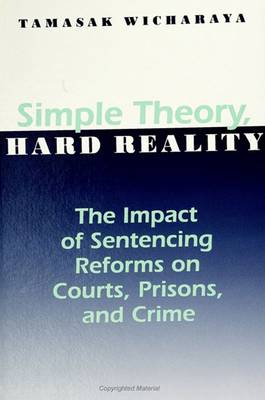
- Retrait gratuit dans votre magasin Club
- 7.000.000 titres dans notre catalogue
- Payer en toute sécurité
- Toujours un magasin près de chez vous
- Retrait gratuit dans votre magasin Club
- 7.000.0000 titres dans notre catalogue
- Payer en toute sécurité
- Toujours un magasin près de chez vous
Simple Theory, Hard Reality
The Impact of Sentencing Reforms on Courts, Prisons, and Crime
Tamasak WicharayaDescription
Evaluates the impact of tough sentencing reforms on the courts, prisons, and crime. It also unpacks the resulting policy implications.
This book analyzes the origins, contemporary trends, and consequences of sentencing reforms in the United States. It explores and clarifies the principles, current practices, and implementation problems of "get tough on crime" legislation that has been America's most predominant response to crime during the past two decades. In evaluating the impact of these reforms on courts, prisons, and crime, a theory of criminal sentencing reform is built and applied to the data across 47 states over almost 30 years. It relies on original analyses that yield interesting research findings and insightful interpretations.
The author argues that policymakers tend to reduce complex reality to a simplistic form that predicts policy consequence and they tend to adhere to criminology theories that have policy implications that are consistent with their policy choices. The theory of criminal sentencing reform explains various casual links that link the following important factors: sentencing reform policies, sentencing behavior, the size of the prison population, and crime.
This book is an important contribution to the debate over sentencing reform policy. It is essential reading for anyone wishing to understand why sentencing reforms failed to achieve their intended goals.
Spécifications
Parties prenantes
- Auteur(s) :
- Editeur:
Contenu
- Nombre de pages :
- 235
- Langue:
- Anglais
- Collection :
Caractéristiques
- EAN:
- 9780791425084
- Date de parution :
- 10-08-95
- Format:
- Livre broché
- Format numérique:
- Trade paperback (VS)
- Dimensions :
- 150 mm x 227 mm
- Poids :
- 335 g

Les avis
Nous publions uniquement les avis qui respectent les conditions requises. Consultez nos conditions pour les avis.






